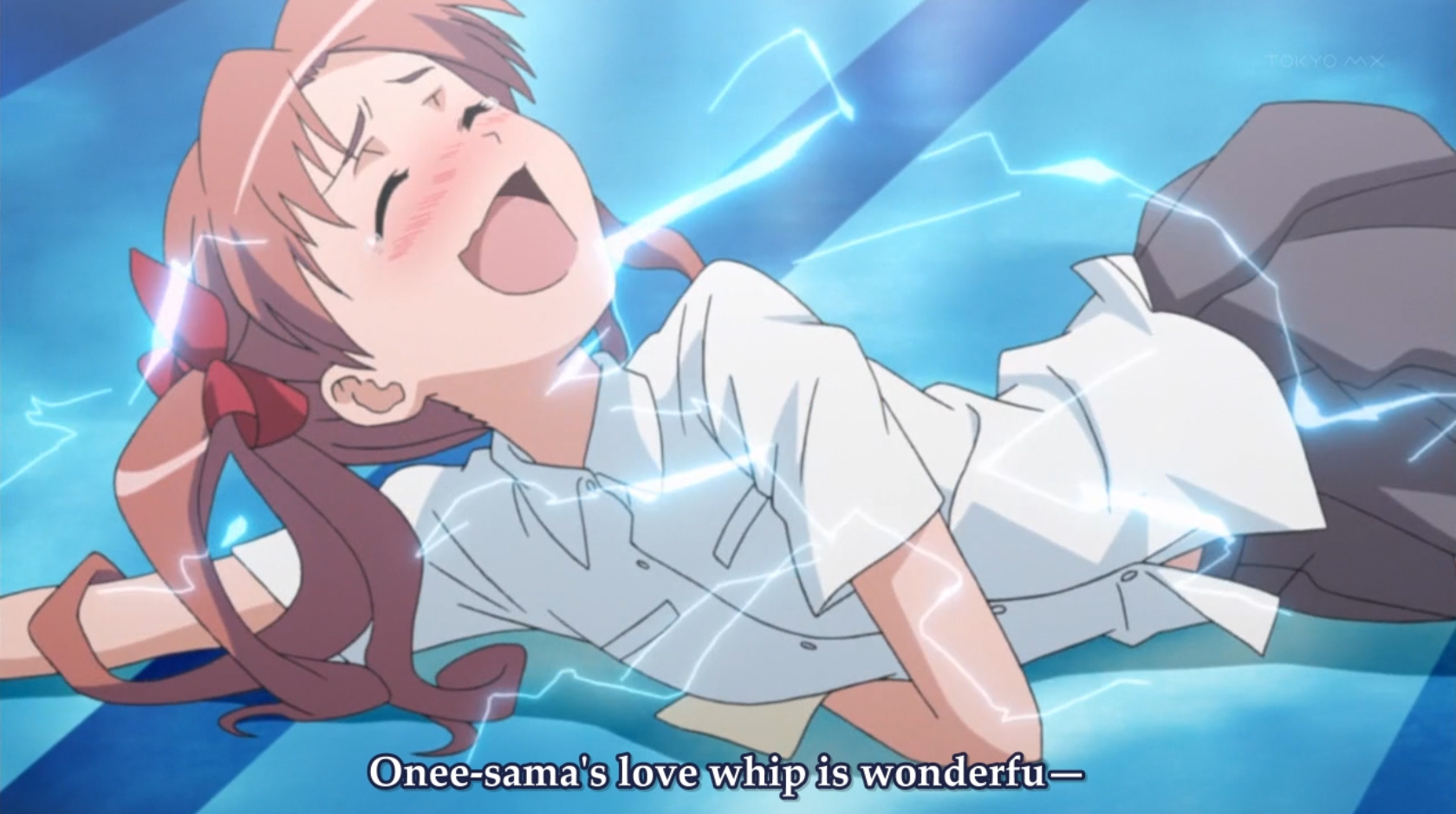Okay, confession time. How many of you clicked on this review just because it had “Railgun” in the title?
If you did, you’re in good company; that’s the very reason I started watching A Certain Scientific Railgun in the first place. It was only later that I learned it was a spinoff of another anime called A Certain Magical Index, which itself was adapted from a series of light novels by Kazuma Kamachi. Ever heard of him? Yeah, me neither. However, you don’t need to have seen Index to understand Railgun; the latter stands on its own as a highly enjoyable mix of action, scientific intrigue, comedy and slice-of-life. Yup, this show has something for everybody… including Bleach fans, since its second half contains an inordinate amount of soul-crushingly boring filler. Unfortunately, that turns out to be the major flaw that drags down an otherwise awesome show.
Find out more after the break!
Railgun first came out in the Fall ’09 season, which was a bit of an anime dry spell. Aside from blatant fanservice (I’m looking at you, Sora no Otoshimono), the only shows of note were either saccharine romance (Kimi ni Todoke) or action-fantasy (Kampfer, The Sacred Blacksmith). Since I can’t stand most romance anime, I decided to stick with the fantasy shows; unfortunately, they wound up sucking worse than the black hole I have for a heart. I was trapped on all sides by painfully bad anime, hoping against hope that there was at least ONE good show to be found among the dregs of mediocrity.
That is when Railgun descended from the heavens, like an angel sent by the big guy himself.
Did you notice the girl with the short brown hair and electric powers? Her name is Mikoto Misaka. In the universe of Railgun, a certain class of people known as espers have psychic abilities, ranked from level one to level five. Mikoto’s powerful electric abilities make her a level five, one of the most powerful psychics in existence. Her most famous technique uses magnetism to fire metallic projectiles at insane speeds, making her the titular Railgun. A few of her friends also possess superpowers: for example, Kuroko Shirai is a twintailed redhead with the hots for Mikoto and the ability to instantaneously teleport, like a cute schoolgirl version of Nightcrawler. Needless to say, a teleporting lesbian pervert trying to win the affections of a tsundere electric girl leads to some… interesting shenanigans.
Yup, there are shenanigans aplenty. See, Railgun is as much slice-of-life as it is action. Fortunately, it manages to balance these elements nicely, leading to a story that’s equal parts awesome, funny, heartwarming and endearing…. at least, until we get to episode 13. At that point, right after the midseason finale, Railgun abandons the plotline of the manga it’s based on and starts dishing a heaping helping of filler, shonen style. Is this filler bad? Well, not exactly. It’s still quite watchable and often funny. However, it certainly doesn’t live up to the high standards Railgun set for itself during its first half. It’s kinda like watching the Star Wars prequels: sure, there are lightsabers whirring and Jedi kicking ass, but somehow that special spark is gone.
Happily, Railgun manages to pull itself out of the muck and get back into form twice; first during the two-episode Big Spider arc, and again during the last three episodes of the Poltergeist arc. The show ends on an overall high note, with a suitably awesome finale that ties up almost all the loose ends. This results in Railgun leaving a good impression, even if it faltered a bit in the middle.
So, should YOU watch this series? Well, that depends. Despite having superpowered girls as part of it’s premise, this is not a superhero show. It does deliver plenty of great action, but also contains a fair amount of comedic slice-of-life. Whether or not you enjoy the slower bits will depend on if you like the characters. Most of them are harmless enough, but Kuroko seems to have earned herself some animosity from fans. I suggest watching the first two episodes as a litmus test; if you don’t hate Kuroko by the end of the second, you may safely continue watching. Otherwise, you might want to skip this show. Of course, I personally love the little lesbian rascal… but, unfortunately, my tastes are not universal.
In any case, if this series sounds like it might give you a jolt, check it out! I think you’ll find it an enjoyable enough diversion, despite it’s shortcomings.




